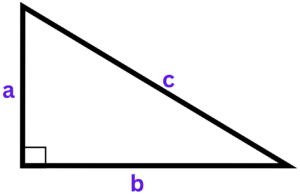Upper and Lower Bounds Step-by-step Examples with Worksheet
Upper and Lower Bounds
- In Mathematics, Upper and Lower Bounds are used to determine the possibilities of a value falling between two extremes.
- This estimation is done by setting a limit on the possible values of the measurement, Range being defined above and below a given limit.
In this article, we will discuss:
- What are Upper and Lower Bounds?
- Steps to Find Upper and Lower Bounds
- Steps for Adding, Subtracting, Multiplying and Dividing Upper and Lower Bounds
Here is one more link to practice a few extra questions: Maths Genie Upper and Lower Bounds Questions
What are Upper and Lower Bounds?
- Lower bound have meant the smallest value that a particular quantity could ever assume and at the same time an upper bound has meant the maximum value of the quantity.
- Upper and lower bounds are often used in fields such as statistics, probability theory, and numerical analysis.
- Upper and lower bounds are widely used in various areas of applications such as statistics, probability theory, numerical analysis and so on.
Steps to find Upper and Lower Bounds
To find the upper and lower bounds for a given value or set of values, follow these steps:
- Decide on the maximum or minimum values that the variable or function can assume.
- Decide the level of accuracy needed in the process.
- Round up to the closest degree of accuracy.
Solved Example:
Question 1: What are the upper and lower bounds for the length of the classroom, given that it has been measured to be 7.9 meters, rounded to the nearest tenth of a meter? The degree of accuracy required is to the nearest hundredth of a meter.
Solution:
- Step #1: Determine the Upper Bound
The maximum possible length is found by taking the midpoint between the measured value (7.9 meters) and the next tenth of a meter (8.0 meters):
Upper Bound = 7.9 + 8.0/2
= 7.95 meters
- Step #2: Determine the Lower Bound
The minimum possible length is found by taking the midpoint between the measured value (7.9 meters) and the previous tenth of a meter (7.8 meters):
Lower Bound = 7.9 + 7.8/2
= 7.85 meters
- Step #3: Round to Two Decimal Places
Since the degree of accuracy required is to the nearest hundredth of a meter, round the upper and lower bounds to two decimal places.
- Step #4: Summarize the Results
The upper bound is 7.95 meters, the lower bound is 7.85 meters, and the error interval is ±0.05 meters.
Solved Example:
Question 2: A car travels a distance of 400 meters to the nearest 10 meters, in a time of 20 seconds to the nearest second. Calculate the maximum and minimum values for the speed, s, in meters per second (m/s), using the formula s = d/t.
Solution:
- Step #1: Given Data
Distance (d) = 400 m (± 5m)
Time (t) = 20 s (± 0.5s)
- Step #2: Determine the Maximum Speed
Maximum speed (s) = (d + 5)/(t – 0.5)
(s) = (400 + 5)/(20 – 0.5)
(s) = 405/19.6
= 20.769 m/s
- Step #3: Determine the Minimum Speed
Minimum speed (s) = (d – 5)/(t + 0.5)
(s) = (400 – 5)/(20 + 0.5)
(s) = 395/20.5
= 19.268 m/s
- Step #4: Round to Three Decimal Places
Round the maximum and minimum speeds to three decimal places.
- Step #5: Summarize the Results
The maximum speed is 20.769 m/s, and the minimum speed is 19.268 m/s.
Practice Questions
Question 1. A train travels a distance of 1000 meters to the nearest 10 meters, in a time of 50 seconds to the nearest second. Calculate the maximum and minimum values for the speed, s, in meters per second (m/s), using the formula s = d/t.
Answer : ( , )Solution:
- Step 1: Given Data
Distance (d) = 1000 m (± 5m)
Time (t) = 50 s (± 0.5s)
- Step #2: Determine the Maximum Speed
Maximum speed (s) = (d + 5)/(t - 0.5)
(s) = (1000 + 5)/(50 - 0.5)
(s) = 1005/49.5
= 20.303 m/s
- Step #3: Determine the Minimum Speed
Minimum speed (s) = (d - 5)/(t + 0.5)
(s) = (1000 - 5)/(50 + 0.5)
(s) = 995/50.5
= 19.703 m/s
- Step #4: Round to Three Decimal Places
Round the maximum and minimum speeds to three decimal places.
- Step #5: Summarize the Results
The maximum speed is 20.303 m/s, and the minimum speed is 19.703 m/s.
Question 2: A cyclist travels a distance of 800 meters to the nearest 10 meters, in a time of 40 seconds to the nearest second. Calculate the maximum and minimum values for the speed, s, in meters per second (m/s), using the formula s = d/t.
Answer : ( , )Solution:
- Step 1: Given Data
Distance (d) = 800 m (± 5m)
Time (t) = 40 s (± 0.5s)
- Step #2: Determine the Maximum Speed
Maximum speed (s) = (d + 5)/(t - 0.5)
(s) = (800 + 5)/(40 - 0.5)
(s) = 805/39.5
= 20.380 m/s
- Step #3: Determine the Minimum Speed
Minimum speed (s) = (d - 5)/(t + 0.5)
(s) = (800 - 5)/(40 + 0.5)
(s) = 795/40.5
= 18.630 m/s
- Step #4: Round to Three Decimal Places
Round the maximum and minimum speeds to three decimal places.
- Step #5: Summarize the Results
The maximum speed is 20.380 m/s, and the minimum speed is 18.630 m/s.
Steps for Adding and Subtracting Bounds
When adding or subtracting upper and lower bounds, the following steps should be taken:
- Take the upper bound of one value and add it to the corresponding upper bound of the other value to get the upper bound of the sum.
- Find the lower bound of the sum as the sum of the lower bound of one value with the lower bound of the other value.
- Round to the nearest degree of accuracy by either rounding up or down.
For example, let’s try to solve the sample problem of adding 5.5 ± 0.1 to 2.8 ± 0.05:
- The upper bound of the sum is
(5.5 + 0.1) + (2.8 + 0.05) = 8.45
- The lower bound of the sum is
(5.5 – 0.1) + (2.8 – 0.05) = 8.15
- If rounded off to the nearest degree of accuracy, then it sums up to about 8.3 ± 0.15.
Steps for Multiplying and Dividing Bounds
When multiplying or dividing upper and lower bounds, the following steps should be taken:
- To find the upper bound of the product, multiply the upper bound of one value by the upper bound of the other value.
- Take the lower bound of one value and multiply it with the lower bound of the other value to get the lower bound of the product.
- Take it down to the nearest degree of accuracy or round upwards or downwards.
For example let learn when we want to multiply 1.5 ± 0.1 by 2.0 ± 0.05:
- The upper bound of the product is
(1.5 + 0.1) x (2.0 + 0.05) = 3.28
- The lower bound of the product is
(1.5 – 0.1) x (2.0 – 0.05) = 2.73
- When rounded to the nearest degree of accuracy, the product is equal to 3.0 ± 0.3.
Conclusion
- That is why upper and lower bounds are considered important in that they help approximate the bounds that mark a specific value or its probable existence.
- These bounds are used in many branches of science and technology including mathematics, statistics and probability theories.
- There should be a strict follow up of procedures when looking for the upper and lower bounds. These are some steps or guidelines to adhere to when making computations in order to enhance accuracy and consistency of results.
- Use addition, subtraction, multiplication or division to enhance the knowledge about the range of potential values that order statistics can take.
- The implementation of these tools and procedures ensures that precise results are obtained and advanced in different mathematical and statistical domains.
Worksheet on Upper and Lower Bounds
Question 1: Find the upper and lower bounds when approximating 36.8 to the nearest whole number.
Question 2: a = 5.3 cm correct to the nearest mm
b = 8.2 cm correct to the nearest mm
Calculate the lower bound for c.
You must show all your working.
Give your answer to 3 significant figures.

Question 3: Find the upper and lower bounds when approximating 2.76 to the nearest hundredth.
Question 4: Find the upper and lower bounds when approximating 0.763 to the nearest hundredth.
Question 5: a = 4.1 cm correct to the nearest mm
b = 10 cm correct to the nearest mm
Calculate the lower bound for b.
You must show all your working.
Give your answer to 1 significant figure.


